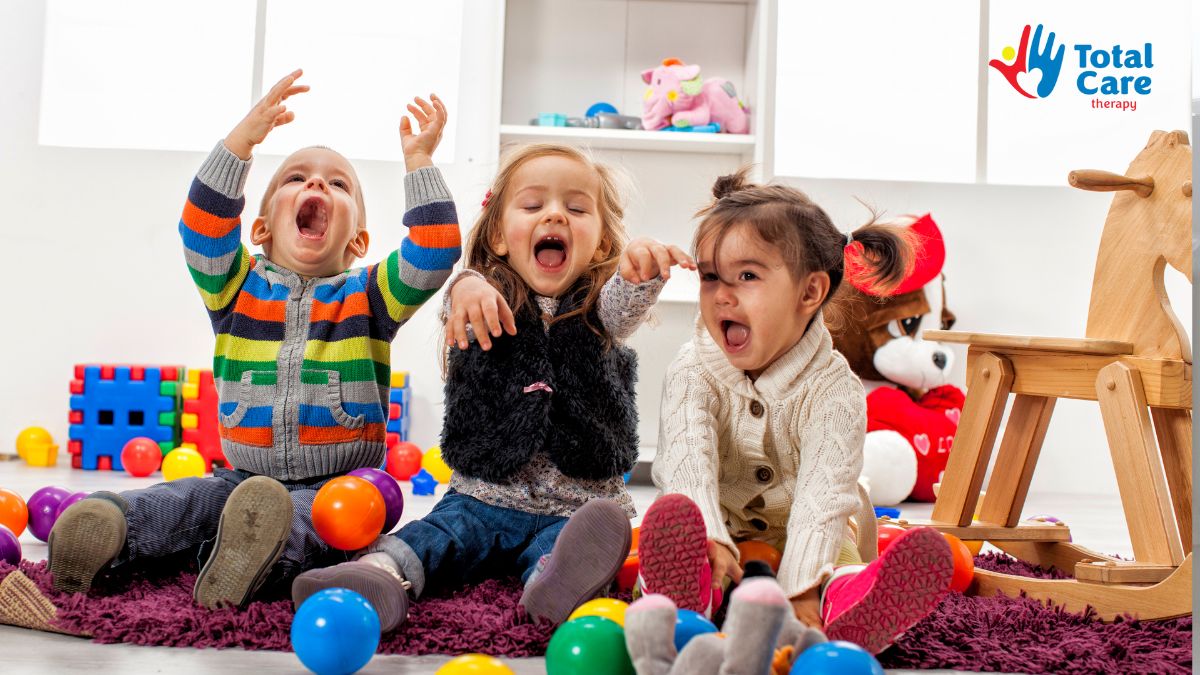Addressing Communication Challenges in Autism
Breaking Barriers in Communication: Empowering Autistic Individuals

Understanding and Overcoming Communication Difficulties in Autism
Communication challenges are among the most prominent features of autism spectrum disorder (ASD), affecting social interactions, learning, and everyday functioning. Recognizing these difficulties, understanding their roots, and applying evidence-based strategies can significantly improve quality of life for autistic individuals. This article explores the characteristics, causes, and interventions related to communication in autism, emphasizing the importance of early diagnosis, inclusive educational practices, and support systems tailored to individual needs.
Understanding Common Communication Difficulties in Autism
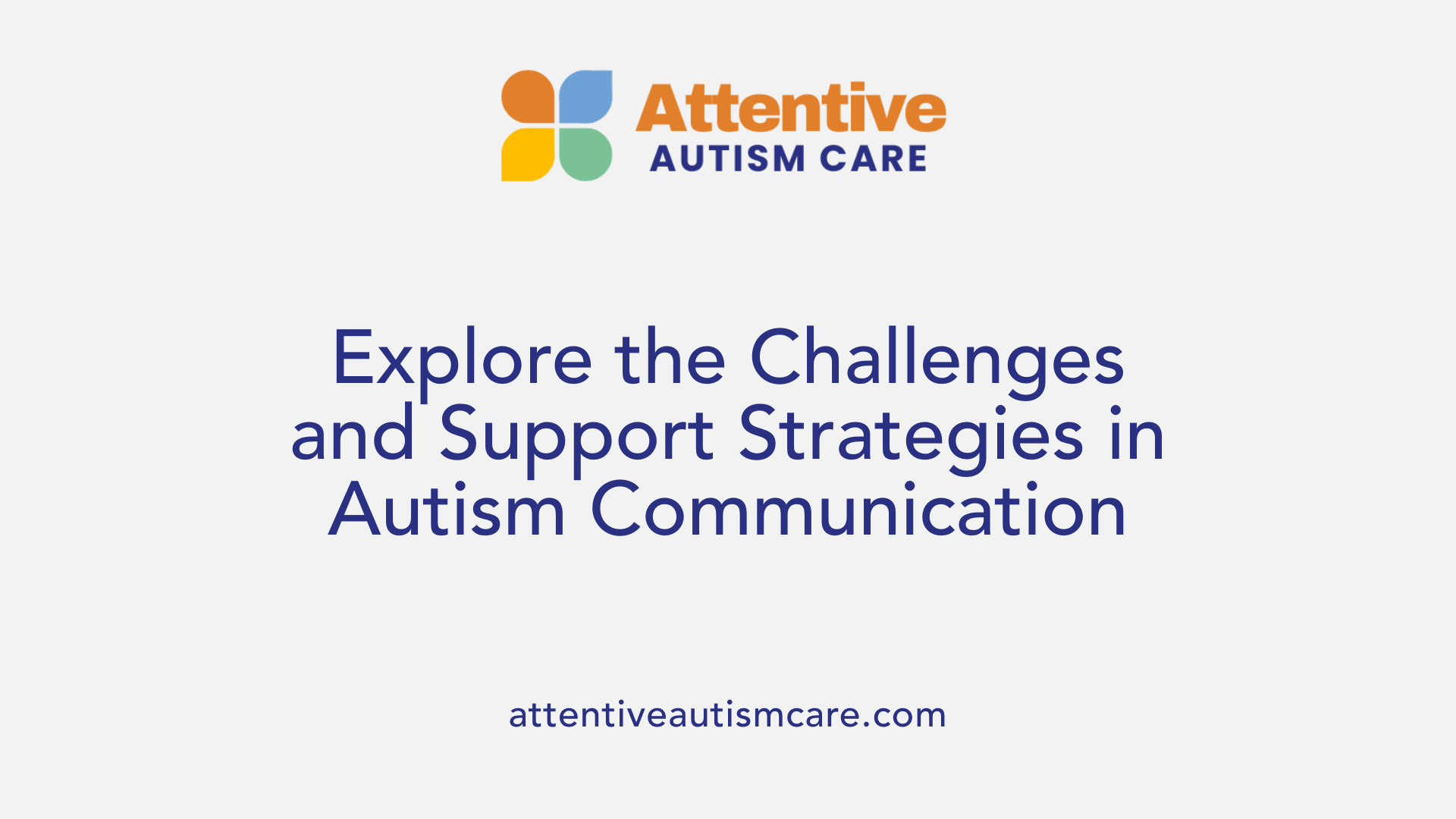
What are common communication difficulties faced by individuals with autism?
Individuals with autism often encounter a range of challenges related to both verbal and non-verbal communication. These difficulties can significantly impact their ability to interact socially and form connections with others.
Many autistic people experience delays in speech development or may not develop spoken language at all. For those who do speak, their language might be rigid, formal, or use repetitive patterns such as echolalia—the echoing of words or phrases. Echolalia can serve functional purposes, including helping to understand language, manage emotions, or engage socially.
Understanding spoken language can also pose challenges. Autistic individuals may struggle to interpret non-literal language forms, such as sarcasm, humor, or idiomatic expressions, leading to misunderstandings.
Non-verbal communication is often affected as well. Difficulties include avoiding eye contact, limited use of gestures, and challenges in recognizing social cues like facial expressions or body language. This can make social interactions confusing and frustrating.
Overall, these communication difficulties can lead to feelings of isolation and misinterpretation in social settings. However, with appropriate interventions, such as speech and language therapy, and the use of alternative communication methods like augmentative and alternative communication (AAC) devices, many individuals can improve their social interactions and express themselves more effectively.
| Communication Aspect | Typical Challenges | Support Strategies | Additional Notes |
|---|---|---|---|
| Verbal Skills | Delayed speech, rigid speech, echolalia | Speech therapy, AAC devices | Repetitive speech patterns are functional and can be leveraged positively |
| Non-verbal Skills | Limited eye contact, difficulty understanding gestures | Visual supports, social skills training | Nonverbal cues are often misinterpreted or overlooked |
| Language Comprehension | Difficulty understanding sarcasm, idioms, figurative language | Explicit teaching, context-based learning | Literal interpretation impacts pragmatic language |
| Social Cues | Challenged by facial expressions and body language | Training in social cues, role-playing | Supportive environments enhance understanding |
Understanding these communication challenges highlights the importance of tailored support systems. Early diagnosis and intervention, along with the use of technology and social skills training, can significantly improve communication abilities and overall quality of life for autistic individuals.
Characteristics and Causes of Communication Challenges in autism
What are the characteristics and possible causes of communication challenges in autism?
Communication difficulties are a hallmark of autism spectrum disorder (ASD) and can significantly impact daily life. These challenges typically include delayed language development, with some children not developing spoken language at all, and others showing uneven growth in different language skills. Autistic individuals often have trouble grasping social cues such as facial expressions, gestures, and body language, which are vital for understanding social interactions.
Atypical speech patterns are also common, including echolalia—repeating words or phrases—which can serve functions like self-soothing or comprehension. Rigid or scripted language, alongside high-pitched tones or unusual vocalizations, might be observed. Nonverbal communication deficits are prevalent, making it difficult for many to maintain eye contact, use gestures effectively, or interpret the nonverbal cues of others.
These communication differences are rooted in structural and functional differences in the brain. Variations in neural connectivity, especially in regions responsible for language, social cognition, and emotional regulation, play a crucial role. Differences in sensory processing, such as hyperacusis or misophonia, further influence communication, making some sounds or stimuli overwhelming. Brain areas like the limbic system, involved in emotional regulation and social behavior, often function differently in autism.
The severity and specific features of communication challenges can vary greatly among individuals. Some may use augmentative and alternative communication (AAC) tools to facilitate expression, while others rely on a combination of speech and alternative methods. Early and tailored interventions are vital. Speech-language therapy, behavioral strategies, and assistive technologies often help individuals develop functional communication skills.
In sum, communication challenges in autism result from a complex interplay of neurological, sensory, and developmental factors. Understanding these underlying causes allows for more effective support and improved social outcomes.
Additional insights
| Aspect | Explanation | Impact |
|---|---|---|
| Delayed Language Development | Children may start talking late or not at all | Hinders social interaction and self-expression |
| Understanding Social Cues | Difficulty interpreting gestures, facial expressions | Leads to misunderstandings and social withdrawal |
| Atypical Speech | Echolalia, rigid language, unusual tone | Affects social communication |
| Nonverbal Communication | Reduced eye contact, gestures, facial cues | Challenges in establishing social bonds |
| Brain Differences | Neural connectivity, limbic system irregularities | Underpins behavioral and communication traits |
| Sensory Processing | Hyperacusis, misophonia, overload | Can interfere with speech and social engagement |
Grasping these multifaceted causes highlights the importance of personalized support for each individual. Early intervention and adaptive strategies can make a meaningful difference in developing effective communication skills for those on the autism spectrum.
Why Teaching Communication Skills in Educational Settings is Critical
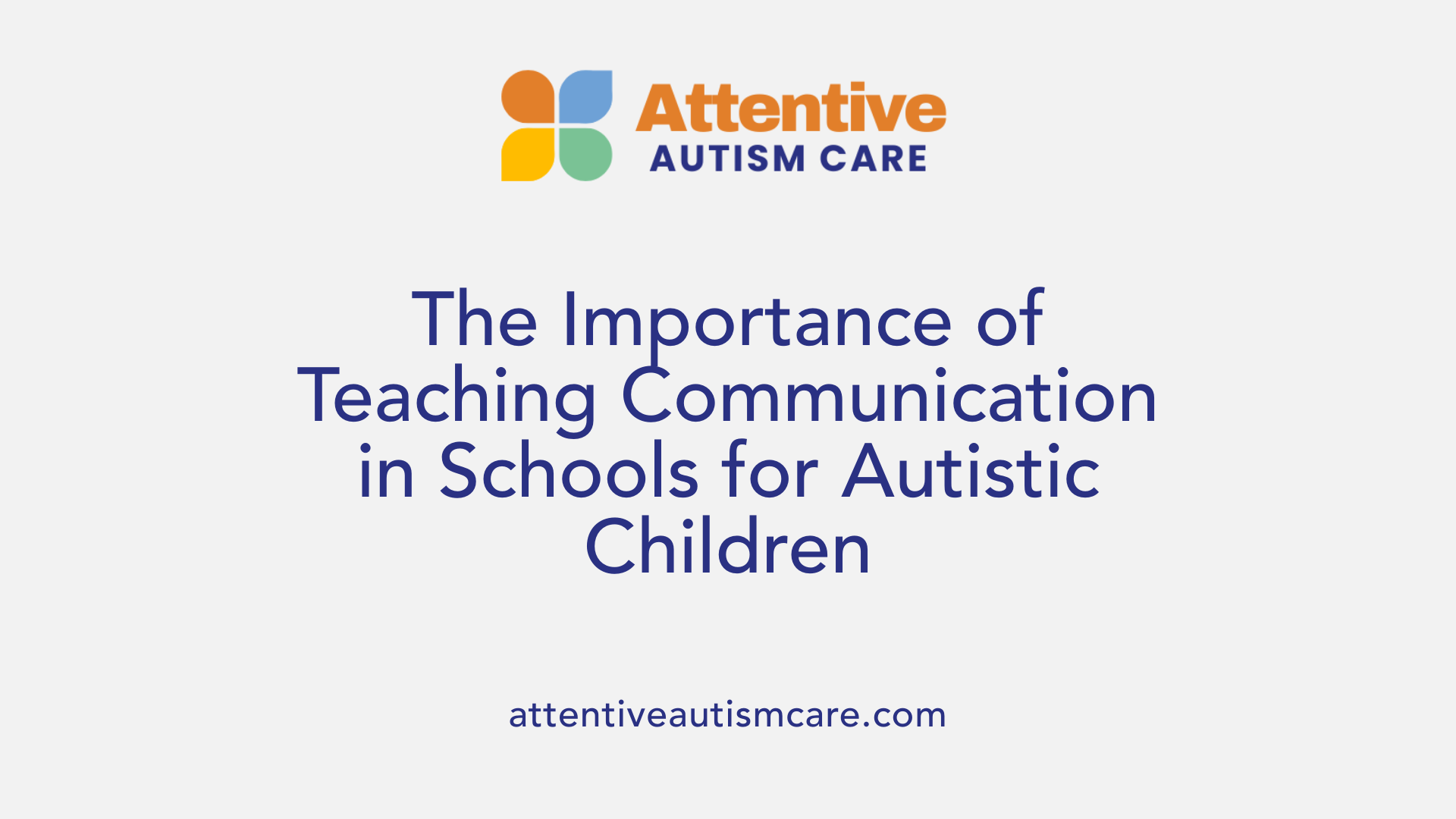
Why is teaching communication skills important in educational settings for autistic children?
Teaching communication skills holds a central place in the education of autistic children because it directly shapes their ability to express needs, ask questions, and engage with others socially. These skills are essential tools for their overall development and independence.
Autism is characterized by unique communication differences that can include limited speech, nonverbal cues, or atypical language use. Addressing these differences through tailored strategies like speech-language therapy, augmentative and alternative communication (AAC) systems, and social learning programs can significantly improve social interactions and understanding.
Effective communication skills help reduce feelings of isolation and frustration. They enable children to interpret and respond to everyday social cues, such as body language, facial expressions, and tone of voice, which are often challenging for autistic children.
In addition, developing communication abilities helps children learn the "hidden curriculum" — the subtle social rules and norms that facilitate smooth interactions in school and community settings.
Supporting communication also decreases challenging behaviors that may arise from an inability to share thoughts or needs. For example, frustration from misunderstood cues can lead to meltdowns; improving communication provides alternative ways to express themselves.
Equipping autistic children with robust communication skills fosters greater social inclusion, allowing for friendships, collaborative learning, and participation in group activities. It also empowers them to advocate for themselves, understand their environment better, and navigate daily situations more effectively.
In summary, prioritizing communication development in educational settings not only enhances academic success but also enriches their overall quality of life and social integration, paving the way for more meaningful participation in society.
Effective Strategies and Interventions for Improving Communication in Autism
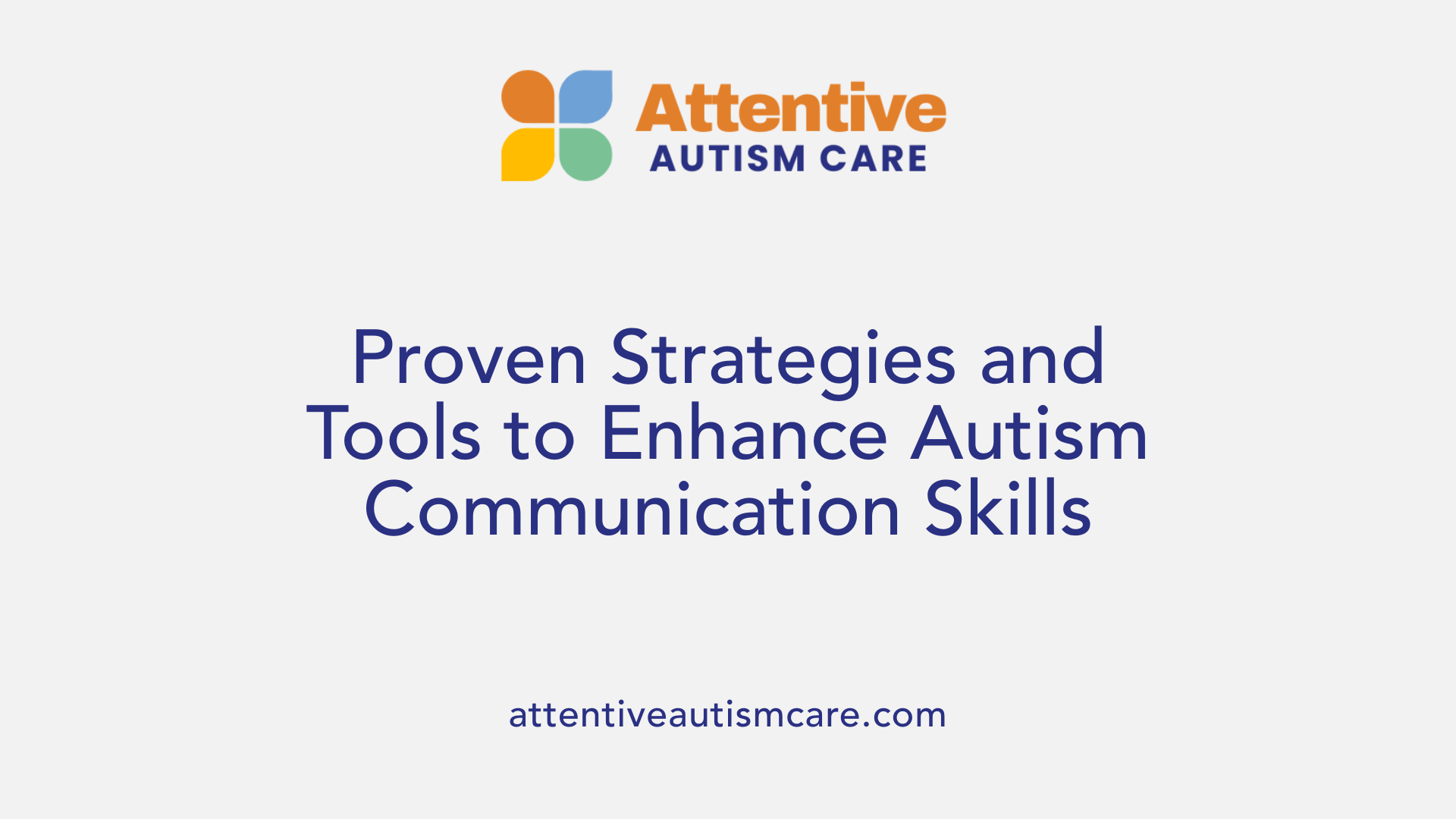
What strategies and interventions are effective in improving communication skills in autistic individuals?
Improving communication in autistic individuals involves a combination of evidence-based therapies and supportive tools tailored to each person’s needs. Speech and language therapy is widely used to help develop expressive and receptive language skills. These sessions often incorporate practical techniques like modeling, play-based activities, and social skills training to enhance understanding and usage of language.
Augmentative and alternative communication (AAC) methods play a vital role, especially for nonverbal individuals or those with limited speech. Tools such as picture exchange communication systems (PECS), communication boards, and speech-generating devices (SGDs) enable users to express themselves more effectively. Sign language is another valuable option, offering rapid and detailed expression, though learning it can be challenging.
Behavioral interventions are crucial for teaching functional communication and reducing problematic behaviors. Applied Behavior Analysis (ABA), Pivotal Response Training (PRT), and Functional Communication Training (FCT) are some of the most researched approaches. These therapies focus on reinforcing desirable communication behaviors and making interactions more rewarding.
In addition to therapy, routines and visual supports like social stories and visual schedules help children understand social expectations and reduce anxiety. Incorporating these structures into daily life supports meaningful communication, especially in unfamiliar settings.
Sensory integration therapy also contributes indirectly to improved communication by addressing sensory sensitivities that can interfere with interaction. By gradually adapting to sensory stimuli, children may become more comfortable participating in social exchanges.
Peer-mediated interventions further boost communication skills by encouraging social interactions with trained peers, offering naturalistic and motivating contexts for practicing social language. Overall, combining these strategies within a supportive environment can significantly enhance communication abilities, leading to better social integration and quality of life.
Research Evidence Supporting Communication Treatments

Is there research-based evidence on effective communication treatment methods for autism?
Yes, extensive research supports several approaches to improving communication skills in autistic individuals. These treatments are tailored to meet individual needs and often involve early, consistent intervention.
One of the most well-established methods is Applied Behavior Analysis (ABA). ABA encompasses techniques like Discrete Trial Training (DTT) and Pivotal Response Training (PRT), which focus on teaching new skills through reinforcement. These behavioral strategies are proven effective in increasing communication abilities and reducing problematic behaviors.
Speech-language therapy is another cornerstone of autism intervention. It helps improve both expressive and receptive language skills, including understanding spoken language, nonverbal cues, and pragmatics. Through targeted exercises and communication supports, speech therapists work with children and adults to develop functional language.
Complementary to these methods are social skills training programs and social narratives. They aim to teach appropriate social behaviors, improve reciprocity, and help individuals interpret social cues more effectively. These strategies can be especially helpful in enhancing pragmatic language use.
Early intervention programs, such as the Early Start Denver Model (ESDM), combine principles of ABA with naturalistic, play-based activities tailored for young children. Evidence shows that early, intensive intervention can lead to significant improvements in communication and overall developmental progress.
Research continually evolves, but current evidence strongly suggests that a combination of behavioral therapy, speech-language support, and early, developmentally appropriate programs effectively enhances communication skills in autism. These approaches can be adapted to each individual's strengths and challenges, promoting better social engagement and independence.
Dispelling Myths and Misconceptions About Autism Communication Difficulties
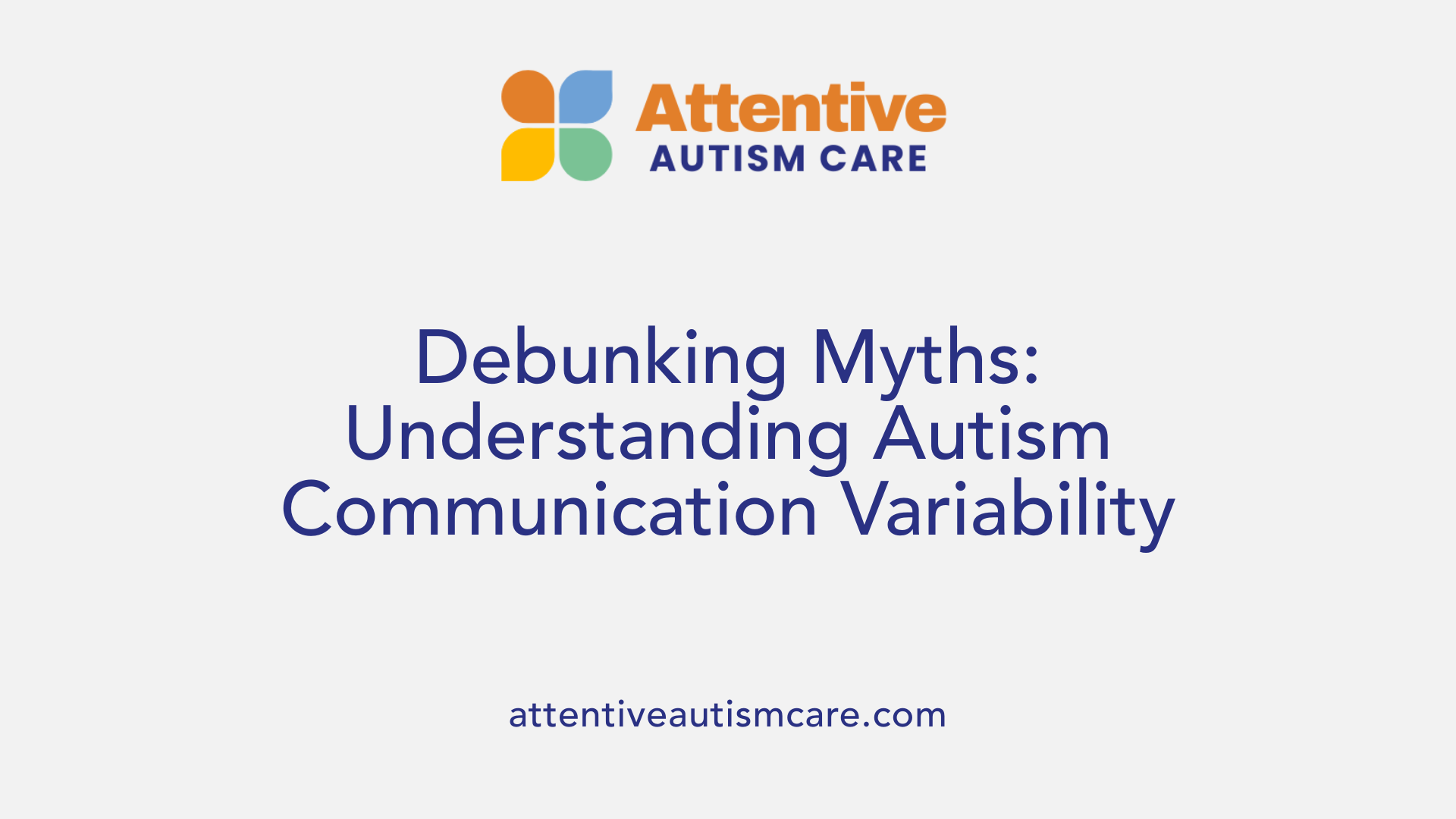
What misconceptions exist about communication issues in autism?
Many myths surround how autistic individuals communicate. A common misconception is that all autistic people are non-verbal or have severe communication impairments. In reality, communication abilities vary widely; some autistic individuals speak fluently, use augmentative and alternative communication (AAC), or rely on non-verbal cues.
Another misconception is that communication difficulties stem solely from a lack of effort or motivation. This oversimplifies the complex nature of autism, which involves differences in processing sensory input, interpreting social cues, and understanding language.
Echolalia, or the repetition of words and phrases, is often misunderstood as meaningless or purely stimulative. However, research shows that echolalia can serve functional roles such as understanding language, managing emotions, or engaging socially.
There's also a mistaken belief that poor social communication equates to low intelligence. Many autistic individuals possess average or above-average intelligence and develop effective communication strategies, including AAC devices or sign language.
Sensory sensitivities, like hyperacusis or misophonia, influence communication by causing discomfort or distraction but are not indicative of incapacity. Similarly, atypical gestures and limited eye contact are part of natural communication differences, not signs of disinterest or deficiency.
Recognizing the spectrum of communication styles among autistic people—ranging from non-verbal to highly verbal—helps to replace myths with understanding. This broader view underscores the importance of personalized support plans and inclusive environments.
Correctly understanding these aspects promotes respect, facilitates better support, and enriches social interactions across diverse contexts.
Support Systems and Resources for Autism Communication
What support options and resources are available for addressing communication difficulties in autism?
Addressing communication challenges in autism involves a comprehensive set of supports tailored to individual needs. Speech and language therapy is a primary intervention, helping individuals develop better expressive and receptive language skills. Speech-language pathologists work closely with autistic individuals to improve social communication, pragmatic language, and understanding of nonverbal cues.
Augmentative and alternative communication (AAC) tools play a vital role, especially for nonverbal or minimally verbal individuals. These include picture exchange communication systems (PECS), speech-generating devices (SGDs), sign language, and digital apps on tablets or computers. These tools can empower users to express their needs, thoughts, and feelings effectively.
Visual supports such as picture symbols, visual schedules, and choice boards help communicate daily routines and social expectations. These supports can reduce anxiety, foster independence, and increase understanding of social and classroom environments.
Educational programs, special training, and resources support families, educators, and clinicians. Webcasts, seminars, and instructional materials provide strategies to enhance communication development, ensuring consistent and effective approaches.
Support groups for families affected by autism offer emotional support, shared experiences, and practical advice. Community resources often include workshops, social skills groups, and information helplines, creating a network of reinforcement for communication improvements.
Furthermore, a multidisciplinary team—including psychologists, speech-language therapists, occupational therapists, and educators—conduct thorough assessments to develop personalized intervention plans. These plans emphasize strengths, address individual challenges, and incorporate preferences and cultural considerations.
Utilizing these diverse support systems enables autistic individuals to access tailored communication strategies, ultimately fostering greater social inclusion and independence.
Moving Forward: Embracing a Spectrum of Communication
Addressing communication challenges in autism requires a comprehensive understanding of individual differences and a commitment to applying evidence-based practices. Early diagnosis, tailored interventions, inclusive educational environments, and supportive community resources play crucial roles in empowering autistic individuals to connect, express, and thrive. Dispelling myths and promoting awareness ensures that communication support respects each person’s unique profile, fostering social inclusion and independence across the lifespan. Continued research and innovation are vital to enhancing our approaches and ensuring that every autistic person has the tools and opportunities to communicate effectively.
References
- Autism Spectrum Disorder: Communication Problems ... - NIDCD
- Autism and communication
- Autism and Communication Skills
- Autism and Communication Challenges
- Communication Challenges in Autism Spectrum Disorder (ASD)
- Why Teach Communication?
- 7 Autism Behavior and Communication Strategies | NU
- Understanding Autism and Communication Difficulties in ...
- Autism Spectrum Disorder: Communication Problems ... - NIDCD
































































